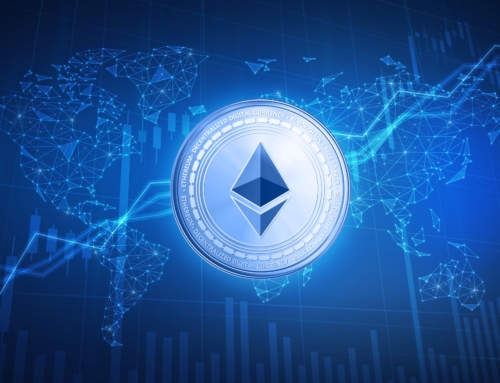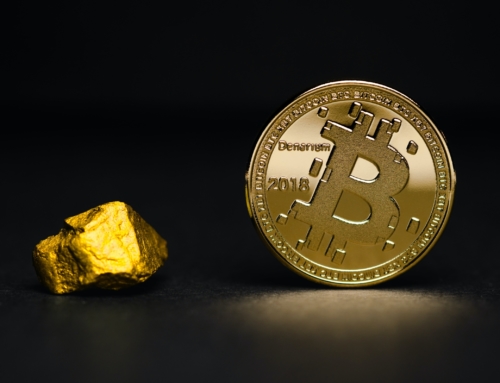ICOs and the early golden age.
The ICOs in 2017 were transparent in showing the real trading volumes of tokens, because everything happened directly between buyers and sellers, using a transaction on the Ethereum blockchain, where for making a payment in ETH, you received the ICO token in exchange.
When this direct purchasing process – a founding feature of blockchain technology – was replaced by onboarding procedures that require the identification of buyers, with the increasing weight of Exchanges, the transparency in ICOs was significantly reduced. Furthermore, the competition between the projects in 2018 increased exponentially with the growth in the number of ICOs, saturating the market with offers of new tokens.
Investors began to rely on Exchanges to figure out which token could have a high volume of trading and therefore a potential increase in value. For this reason, ICOs began courting exchanges with the largest user base and largest trading volumes. As a result, such exchanges, with real or assumed trading volumes, increased profits thanks to high listing prices for the new tokens, as ICOs were desperate for liquidity for their secondary market investors.
The ICO projects in the years 2018-2019 paid exorbitant commissions to be listed on the main Exchanges.
During the heyday of ICOs, it was common for more ambitious projects to allocate a budget between $ 50,000 and $ 2,000,000 just to be listed on major Exchanges.
In 2017, the average ICO was able to raise up to tens of millions of dollars in days, sometimes even minutes, and investors were demanding near-instant cash on their investment. ICO’s Telegram channels were crowded with thousands of people asking when their favourite token would be listed on Binance or other major exchanges.
It should come as no surprise that many startups that wanted to sell their token were unable to meet the aspirations of their investors, failing to list on major exchanges.
The first DEXs and the innovation of the AMMs.
The last resort for many investors was to create their own liquidity using early DEXs such as EtherDelta, where quotes were disintermediated. All you needed was someone on the other side of the smart contract, willing to buy or sell the token. Any project or investor could easily add their token details and create a trading pair to buy and sell the asset.
But EtherDelta faced a SEC lawsuit against its founders in November 2018. Today it still exists under another name, but it doesn’t have the volumes it had in its prime in 2017, largely due to inadequate user experience.
In November 2018, a project called Uniswap launched a new way of making a DEX: simpler and able to solve the problem of having an order book on the blockchain. Uniswap is an automated market maker for token exchange (AMM) without authorization on Ethereum, without using order books. The protocol is designed around ease of use, gas efficiency, censorship resistance. It has liquidity reserves that are 100% on-chain. There are no dependencies outside the Ethereum network for the protocol to work. This allows anyone with an internet connection to exchange any ERC20 token and, most importantly, anyone to integrate Uniswap functionality directly into their WEB3 dApp.
Another innovative DEX born as well in 2018 is Balancer, which works in a similar way to Uniswap. However, Balancer offers additional features, including the ability to group up to eight tokens in a pool. We can think of Balancer as a kind of index fund, where users create token-based funds in their wallets. These funds are known as balancing pools and any user who wishes to provide liquidity to a pool can do so by simply depositing an asset into them.
From listed ICOs to DEX AMMs
Many companies have realized that rather than spending large sums of capital for listing their tokens on an Exchange, it is preferable to allocate their budgets to build a liquidity pool on a DEX such as Uniswap or Balancer. In this way, startups no longer have to incur a sunk cost on listing fees and can shift this allocation to the working capital of their token. This capital is recoverable at any time and with any increase, should the team need it in the future.
Additionally, projects can worry less about wasting valuable resources coordinating listing on an Exchange, as they have a direct incentive to the community to trade tokens on the DEX.
For example, suppose a token project raised $ 1 million to fund the next year of business. The project team decides to allocate 5% of this collection in ETH for a pool on Uniswap, combined with its own reserve of tokens. In this way, trading can take place within minutes after the token sale closes and the project can start earning revenue on part of its capital.
Ultimately, by creating a pool of liquidity with capital from funding, investors and startups no longer rely on centralized exchanges to dictate liquidity. This is an improvement over previous iterations of early DEXs such as EtherDelta, as there is now a reasonable barrier to entry for on-chain liquidity: capital and user community. Without capital, there is no liquidity. Without a strong user community, the token is either dumped or has few trades.
By promoting a pool on Balancer or Uniswap for all trading activities of your token, not only does the project make money, but it attracts other members of the community to become liquidity providers and earn a slice of the trading fees, making liquidity “democratic” and reducing the current supply.
Conclusion
To sum up, liquidity pools on new DEX AMMs such as Balancer and Uniswap are a crucial first step that all-new token creation projects should consider when it comes to understanding how to provide liquidity to their early investors. Uniswap or Balancer are a great way to kickstart liquidity, under the conditions chosen by the team that developed the token.
This does not eliminate the usefulness of Exchanges for listing, the most reliable and authoritative trading platforms will always be beneficial in the long term.





